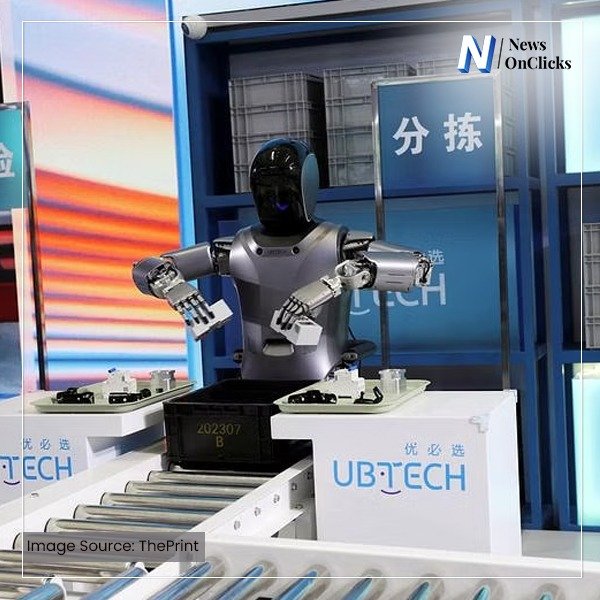
In the rapidly evolving world of robotics, China is intensifying its efforts to rival Tesla in the humanoid robot sector. At the recent World Robot Conference in Beijing, over two dozen Chinese companies showcased their advancements in humanoid robots, highlighting China’s ambition to dominate this emerging industry.
China’s Strategic Move into Humanoid Robotics
China’s drive towards humanoid robots mirrors the early days of its electric vehicle (EV) revolution. The country’s strategy involves a combination of government support, aggressive price competition, and a robust supply chain. This approach becomes clear through the substantial investments being made. For example, Beijing has launched a $1.4 billion state-backed fund, while Shanghai has announced a similar fund.
Arjen Rao, an analyst at LeadLeo Research Institute, notes that China’s humanoid robot industry benefits from strong supply-chain integration and mass production capabilities. This advantage is crucial as the global market for humanoid robots is expected to surge to $38 billion by 2035, according to Goldman Sachs.
China’s Technological Innovations and Cost Reduction
The latest humanoid robots from Chinese companies demonstrate significant technological advancements. For instance, Shanghai Kepler Exploration Robotics is working on its fifth version of a worker robot, aiming to reduce costs from around $150,000 per unit to less than $30,000. This ambitious goal reflects China’s expertise in rapid iteration and cost-effective production.
Chinese companies are increasingly leveraging domestic suppliers, particularly within the EV industry, to keep costs down and sustain high production rates. For instance, UBTECH Robotics is not only testing its robots in automotive factories but also plans to scale up to mass production by next year. Consequently, this strategic approach enables them to streamline operations and enhance efficiency, ensuring a competitive edge in the market.
Tesla’s Influence and the “Catfish Effect”
Tesla’s entry into the humanoid robot market with its Optimus model has sparked what experts refer to as the “catfish effect.” Just as Tesla’s Shanghai factory spurred local EV manufacturers to accelerate their efforts, the introduction of Tesla’s Optimus has similarly pushed Chinese competitors to innovate more rapidly.
Despite Tesla’s head start in artificial intelligence, Chinese firms are confident in their ability to reduce production costs and bring competitive products to market. The Optimus robot, showcased at the Beijing conference, remains a popular exhibit, but it faces strong competition from China’s rapidly advancing humanoid robots.
The Future of Humanoid Robots in China
China’s current focus is on scaling up humanoid robot production, but experts like LeadLeo’s Rao predict that widespread commercial applications might still be 20 to 30 years away. The Chinese government’s push for mass production by 2025 will likely start on a smaller scale, but the ongoing investments and innovations suggest a significant impact on global robotics in the long term.
As China continues to accelerate its efforts, the race between Chinese and Western robotics firms promises to drive technological advancements and cost reductions in the humanoid robot sector. For now, China’s strategic investments and competitive pricing position it as a formidable contender in the global robotics arena.









